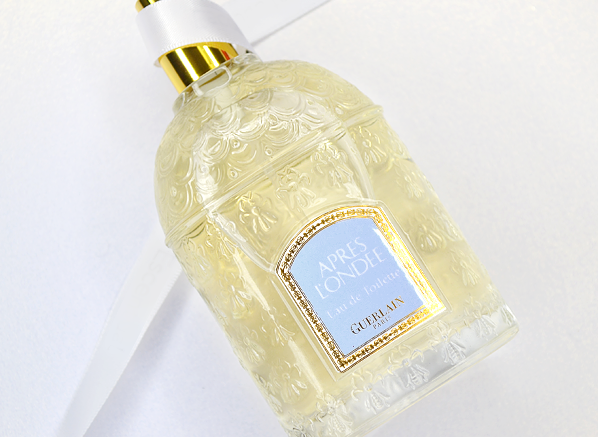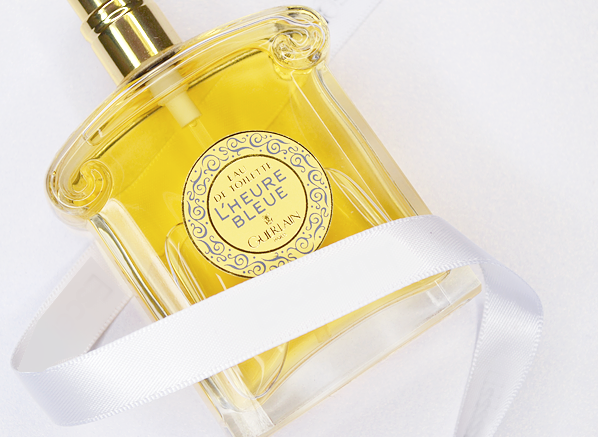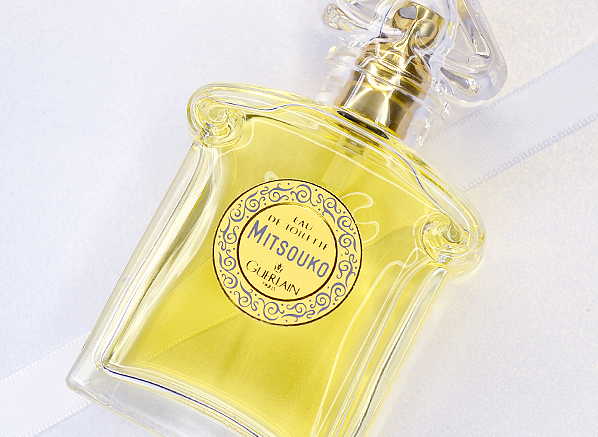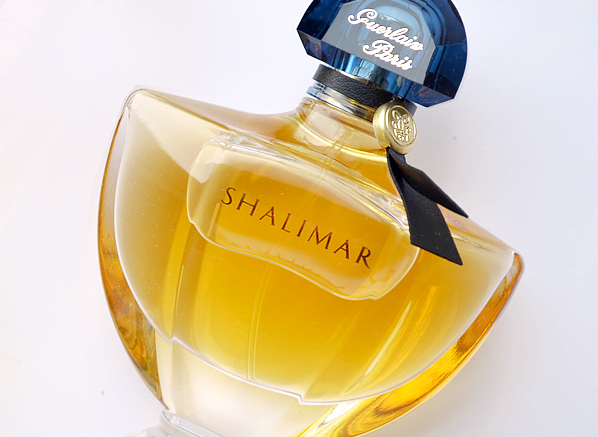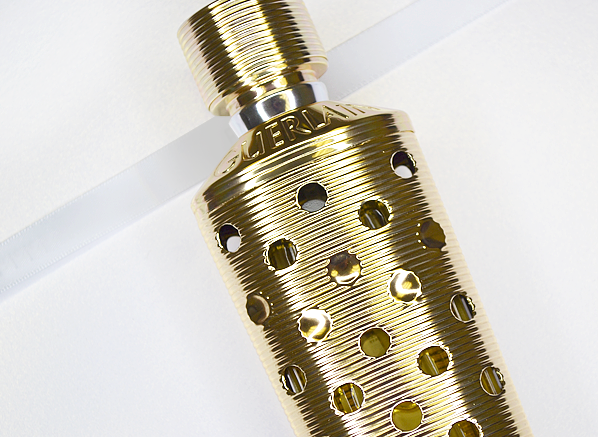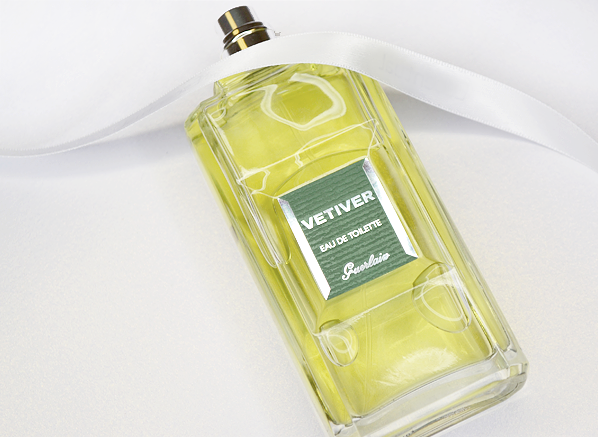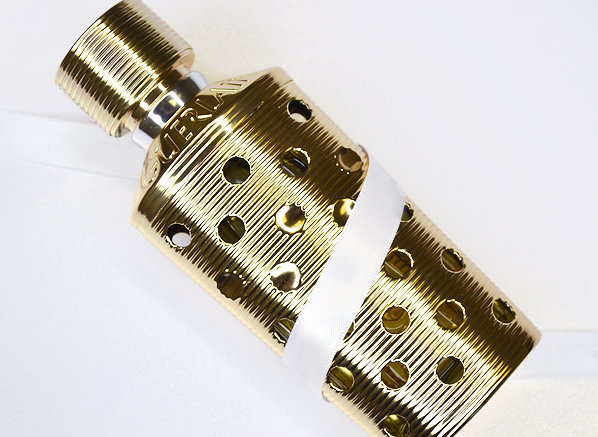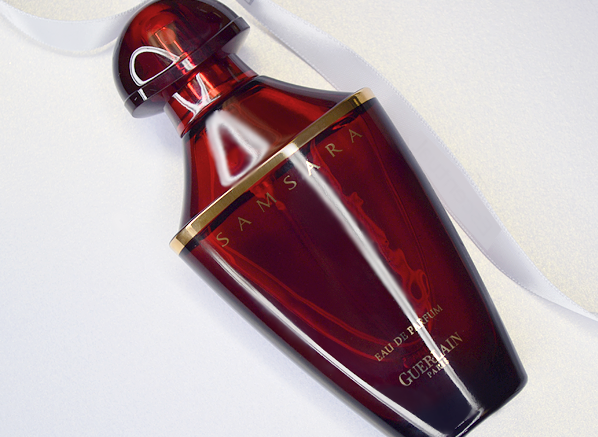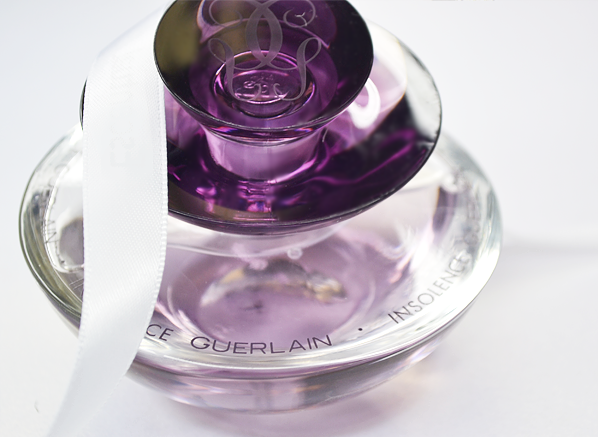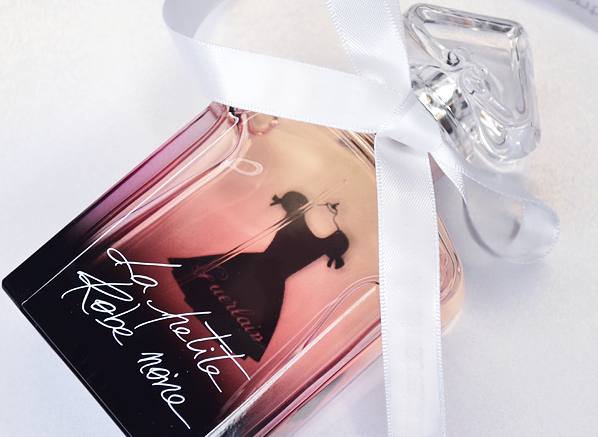![]()
 It wouldn’t be too difficult to be intimidated by the luxury Parisian fragrance house of Guerlain. After all, they are steeped in nearly 200 years of fragrant history and their back catalogue boasts possibly the highest concentration of masterpieces within the entire industry. For centuries they have provided mothers, daughters, grandmothers and great grandmothers with their fragrant signatures, surviving two world wars and an ever changing industry that works at the speed of light. Great moments in history and notable people in time have worn Guerlain and the legacy of the house lives on today in a collection that celebrates their illustrious and fascinating past.
It wouldn’t be too difficult to be intimidated by the luxury Parisian fragrance house of Guerlain. After all, they are steeped in nearly 200 years of fragrant history and their back catalogue boasts possibly the highest concentration of masterpieces within the entire industry. For centuries they have provided mothers, daughters, grandmothers and great grandmothers with their fragrant signatures, surviving two world wars and an ever changing industry that works at the speed of light. Great moments in history and notable people in time have worn Guerlain and the legacy of the house lives on today in a collection that celebrates their illustrious and fascinating past.
What I love most about the house of Guerlain (and trust me, there are many things I love about Guerlain) is the fact that it has never once been afraid to be impolite. In Paris, they used to say that there were two fragrance houses: Caron and Guerlain. Caron was for duchesses and Guerlain was for cocottes. It’s this a touch of vulgarity (which is honestly never a bad thing, if you ask me) that has led Guerlain to be so popular. Their classic fragrances were so groundbreaking during their time because they were a little bit risqué and likely to get one into trouble, and for that reason they still feel relevant and modern today. I say, you can keep your gimmicky niche brands that say they are daring and just give me a naughty bit of Guerlain any day.
In celebration of this legendary house that I love so dearly, I want to bring your attention to 12 fragrances that I consider to be ‘Icons of Guerlain’. These are perfumes that have witnessed wars, steamy nights in the sack, flights around the world and the ever changing, marketing-focussed hive mind of the fragrance industry, and have all lived to tell their tales. They each have something different to say and every single one is bold, unafraid of being seen as gauche and utterly beautiful. These are the Guerlain icons and they mean business.
![]()
Jicky
(Aimé Guerlain; 1889)
Style: Abstract Animalic Fougére
Jicky has been in continuous production since 1889. Let’s just take a moment to breathe that in. Standing tall on Guerlain’s shelves for as long as the Eiffel Tower has dominated the skyline of Paris, Jicky has unrivalled longevity in an industry where a fragrance can be canned after a few months if it doesn’t meet initial sales projections. Think about it this way, nobody on this planet was alive when Jicky was launched – it’s almost impossible to comprehend.
In 1889, most perfumes were simple creations made to smell like, and were named after, a particular flower. Jicky was the antithesis of this, reportedly taking its name after a girl that perfumer Aimé Guerlain had fallen for whilst studying in England. The love was unrequited but not fruitless as it spawned the world’s first abstract fragrance – a scent that didn’t aim to smell like any one thing in nature and was also one of the very first scents to use synthesised materials (with Houbigant’s Fougére Royale being the first), namely coumarin, an almond and hay-like smelling compound found within tonka bean; linalool, a spicy floral chemical found within many flowers; and vanillin, the primary component of the vanilla bean that gives it its recognisable smell.
Jicky’s opening is a wave of fresh, zingy lemon accompanied by softly sweet lavender. It feels bracing, zesty and comforting all at once. The rich animalic notes appear quickly, giving the impression of hot breath on a cold winter’s morning. Jicky’s heart is floral and green, whereas its sumptuous base is warm and creamy, with oodles of cosy vanilla, funky civet, vetiver and patchouli. The lavender hums in the background all the way through, adding a herbaceous and sharp quality that tempers each and every stage.
I always come back to Jicky. It’s a perfume that never fails to surprise, even after 126 years on the market, and wearing it is like welcoming home an old friend – comforting and familiar, yet somehow new each and every time. If you sniff but one Guerlain in your lifetime, Jicky should be the one.
An iconic Guerlain for: The edgy rebel with a warm heart.
Best concentration: For the most intense and animalic experience, the Extrait is unrivalled however, the Eau de Parfum is an enveloping experience that shouldn’t be missed.
![]()
Après L’ondée
(Jacques Guerlain; 1906)
Style: Ethereal Powdery Floral
Après L’ondée (after the rain) feels like the most ‘Guerlain’ fragrance from the house, whilst at the same time appearing as the most un-‘Guerlian’-ish. On the one hand it has that make-up-like accord of violet, iris and heliotrope that appears many times throughout Guerlain’s rich history (see L’Heure Bleue and Insolence, in particular), but on the other, Après L’ondée, which takes inspiration from a walk in the sunshine after the rain, is an ethereal wisp of fragrant air amongst a body of work that is large, bold and not lacking in volume. It’s this dichotomy that makes Après L’ondée so interesting, not to mention the fact that it also happens to be one of Guerlain’s most heartbreakingly beautiful fragrances.
Many people refer to L’Heure Bleue as a melancholic perfume (more of that in a mo), but to me it is anything but, whereas Après L’ondée does strike me as a distinctly sad perfume. It opens with a delicate breeze of almond and violet, packed full of sweet, fruity and earthy ionones, before swiftly moving into a heart of powdery iris, which is rooty and grey, and a warm Guerlain-esque base of vanilla. Après L’ondée is a pale, porcelain fragrance suited for foggy winter mornings and moments of wistful contemplation when the rain stops.
An iconic Guerlain for: Dreamers, creatives and those that like to spend time feeling contemplative.
Best concentration: Après L’ondée is currently only available in an Eau de Toilette strength (it used to be available in an Extrait, but this concentration has long since been discontinued and fetches an impressive sum on auction sites), in which it is presented at its most light and wistful.
![]()
L’Heure Bleue
(Jacques Guerlain; 1912)
Style: Gourmand Oriental Floral
L’Heure Bleue cemented Guerlain as the patisserie of the perfume world, with Jacques Guerlain as the head pastry chef. The perfumer was moved by the blue hour, that time when just before the sun sets when it’s neither day or night: the in-between moment. Of the creation of L’Heure Bleue he is famously quoted as saying; “I felt something so intense, I could only express it in a perfume”, leading many to describe it as a ‘melancholic’ perfume tinged with sadness.
To my nose, L’Heure Bleue is anything but sad, but I wouldn’t say it was cheery either. It’s not a perfume that speaks to me in emotion, but it is one that communicates strongly in colour. The rich spices, the pastry-like vanilla and carnation, speak in oranges and browns, where the neroli sings in yellow and the iris whispers in the finest shade of blue. L’Heure Bleue paints a picture of twilight with bold odours and it smells as beautiful as a slow, sleepy sunset. No wonder it’s still an icon after a whole century on the market.
An iconic Guerlain for: Lovers of rich, spicy gourmands with a colourful quality.
Best concentration: I enjoy the transparency of the Eau de Toilette because it gives L’Heure Bleue’s bold colours space to move and breathe.
![]()
Mitsouko
(Jacques Guerlain; 1919)
Style: Elusive Fruity Chypre
Mitsouko is easily the trickiest Guerlain to pin down. It takes its name from Claude Farrèrre’s novel ‘La Bataille’, in which the heroine, a Japanese girl named Mitsouko, falls for a British naval officer. Perfumer Jacques Guerlain was inspired to improve upon François Coty’s impressive Chypre from 1912, a scent that defined a genre, and that’s exactly what he achieved with Mitsouko: the world’s greatest chypre, one with a pronounced backbone and an ice-cold stare.
What makes Mitsouko so fascinating is how elusive it is. It opens cool, with chilly notes of peach, white spice and bergamot. The opening is austere and confrontational like a cold, hard glare that doesn’t forgive. Things do warm up though, and Mitsouko soon softens with a lactonic edge, like milky peaches, that blends into the familiarly warm and sour tones of a mossy-based chypre. Out of all the iconic Guerlains on this list, Mitsouko is perhaps the most difficult, but it’s a fragrance that is worth the effort getting to know. Once she lets you in, Mitsouko does not let go.
An iconic Guerlain for: The aloof, quiet and fascinating.
Best concentration: The Eau de Parfum has recently been re-jigged by Guerlain’s current in-house perfumer, Thierry Wasser, and it’s smelling better than ever. Also, as you will see is a reoccurring theme in this post, the Extrait is not to be missed either.
![]()
Shalimar
(Jacques Guerlain; 1925)
Style: Royal Vanilla Oriental
It’s always a bit tricky writing about Shalimar. I mean, what can be said that hasn’t already been waxed lyrical by better writers than I? Shalimar is legend. She is Guerlain’s flagship fragrance and an exotic tale of undying romance, and love. Named after the gardens in Lahore created as an act of love by the Shah Jahan for his wife, Mumtaz Mahal, for whom he also made the Taj Mahal, Shalimar is a love story on an epic scale, captured within a perfume that is as equally grand and iconic.
Shalimar starts out with a wave of fresh bergamot, enough to know your socks off, in fact. She shimmers and sparkles to begin with, evoking the glistening waters of the reflective pool leading to the entrance of the Taj Mahal. The brightness doesn’t last for long before Shalimar becomes a legendary blend of sweet, powdery vanilla (thanks to orris and ethyl vanillin) and smoky animalic notes. In life, there are few joys greater than a dab of Shalimar in Extrait concentration – it is the scent of the roaring jazz age: of fabulous flapper girls and raucous nights out.
An iconic Guerlain for: Grand dames and fearless gents.
Best concentration: Shalimar is good in any concentration, but of course the Extrait blows everything else out of the water. I have been known to rock a few dabs of the Extrait with a few spritzes of the Eau de Parfum and Eau de Toilette for good measure though, but then, I don’t mess about when it comes to Shalimar…
![]()
Vol de Nuit
(Jacques Guerlain; 1933)
Style: Glamorous Oriental Chypre
Everything about Vol de Nuit says ‘glamour’, right from its name, which means ‘Night Flight’ and is taken from the Antoine de Saint-Exupéry novel of the same name, to the bitchy notes of galbanum and moss that make it a Vuitton-luggage wielding movie star travelling the world on her private jet. It’s not just the glamour that draws one to Vol de Nuit though, it’s also the strangeness that it exudes with its fusion of styles – a alluring mix of the floral, oriental and chypre.
Vol de Nuit feels green and hespiridic at first, bathing the wearer in a mean sort-of sharpness that lasts briefly, but quickly leaves an impression. It’s mossy and softly aldehydic, hinting at glamorous ladies who are too cool for Chanel Nº5. Things switch up rapidly and Vol de Nuit transitions to softly spiced woods imbued with plush, pollen-like narcissus, before resting on Guerlain’s familiar bed of velvety orris and vanilla. Whenever I smell Vol de Nuit I think of old hollywood movie stars shot in sepia tones and it makes me want to put it on, and do my best Marilyn Monroe impression. Feel free to picture that image in your head.
An iconic Guerlain for: Glamazons and movie stars, and those that dream to be them.
Best concentration: The Extrait is one of the most fabulous things on the planet. Accept no other.
![]()
Vetiver
(Jean-Paul Guerlain; 1961)
Style: Revitalising Woody Citrus
Guerlain isn’t just a legendary perfume house for the ladies, it also caters for us gents too and like its feminine offerings, the fragrant establishment at No. 68 Champs-Élysées, also has a number of incredibly highly-regarded masculine scents too, the most notable of which were composed by Jean-Paul Guerlain, the last perfumer in the Guerlain lineage. One of JPG’s most popular masculine scents is Vetiver, an ode to the world’s most fragrant grass – a clean and refreshing scent that feels like the fragrance for a fearless explorer.
I think it’s pretty much an agreed fact at this point that Vetiver is one of the greatest vetiver fragrances on Earth. It is a reference fragrance within the genre, presenting the note in a pure and clean manner. Vetiver is zingy and gingery with lots of citrus, but it also has depth and darkness to it, accompanying all of that freshness with woody, aromatic and tobacco-like notes. I’d classify Vetiver as a refreshing cocktail of citrus and greenery, chased with a pinch of salty and woody warmth. There’s a beautiful clarity to the whole thing that makes it feel wise and worldy, almost as if by wearing it, one opens their mind up to more of what the world has to offer.
An iconic Guerlain for: Vetiver lovers and those that like to be well-travelled.
Best concentration: Vetiver comes in two types: the original Eau de Toilette and the Eau de Toilette Extreme. I say go for the original, it can’t be beaten.
![]()
Habit Rouge
(Jean-Paul Guerlain; 1965)
Style: Sporty Leather Oriental
Perfumer Jean-Paul Guerlain is not just a top notch perfumer (one of the very best in the world), he was also an accomplished equestrian in his day, and Habit Rouge is the combination of these two loves. Named after the red jackets traditionally worn on hunts, Habit Rouge is a timeless masculine that manages to smell refined and edgy all at the same time. Many a handsome man has worn this fragrance, and I’m sure many a beautiful woman has been wooed by its typically-Guerlain charms.
Habit Rouge is often referred to as the masculine counterpart to Shalimar and when sniffing the two fragrances together side-by-side, it’s easy to see why. The male of the species opens with a similar blast of citrus with lemon and Shalimar’s signature bergamot, both of which feel delightfully sherbert-like. The heart is soft and supple leather with lots of signature Guerlain-sweetness and a delicately powdery texture. What I love about this fragrance is that it is the type to suit anyone, whether they be regal dandy or dastardly rebel – it is, hands down, one of the greatest masculine fragrances of all time.
An iconic Guerlain for: Every man. Honestly, every dude should have a bottle of this in his life.
Best concentration: As far as masculine fragrances goes, Habit Rouge Eau de Parfum is pretty darn spectacular.
![]()
Nahéma
(Jean-Paul Guerlain; 1979)
Style: Technical Rose Oriental
Nahéma is easily Guerlain’s most underrated fragrance, perhaps because it is most obviously the least ‘Guerlain-esque’ fragrance of the lot. But that’s not to say that it’s not a worthy addition to the lineup, in fact, this Guerlainophile would go as far as saying that it is just as iconic as the likes of Mitsouko and Shalimar, partly because it is so unusual and surprising for this house, and partly because it has a fascinating complexity to it that can only be found at the hands of a perfumer as talented as Jean-Paul Guerlain.
I’ve read many times that Nahéma is a rose fragrance that contains no natural rose and that it is, in fact, a masterfully composed rose painstakingly pieced together by Jean-Paul Guerlain (who took inspiration from the image of actress Catherine Deneuve in the film ‘Benjamin: the Diary of an Innocent Boy’) using a variety of other materials. Nahéma certainly smells like a rose perfume – a big fruity and spicy one, at that. It is peachy, vegetal and cinnamon-like all at the same time, living up to its namesake, the Persian Queen in Scheherazade’s One Thousand and One Nights.
An iconic Guerlain for: The fiery temptresses of the world or simply those that love rose perfumes.
Best concentration: As with many Guerlains, the Extrait is the fragrance at its most sublime, but get it while you still can because rumour has it that this concentration will be discontinued early in 2016.
![]()
Samsara
(Jean-Paul Guerlain; 1989)
Style: Excessive Floral Oriental
Samsara was Guerlain’s attempt at tapping into the loud and proud, shoulder-pad wielding fragrances of the 1980s. I’m talking about the likes of YSL’s Paris and Dior’s Poison et al – the heavy hitters and blockbusters that defined the decade. It was also the first Guerlain fragrance where the concept and marketing brief came before the juice, as well as the first time that the legendary house invited external perfumers to compete to make the final product. Ultimately, it was Jean-Paul Guerlain that was successful in bringing Samsara to life, and let’s face it, the end result shows that he was the perfect man for the job.
Like Shalimar, Samsara looks to the East for its name and inspiration. Named after the sanskrit word for the cycle of life, death and rebirth, Samsara boasts exotic materials such as jasmine and sandalwood, presenting them in the bold, opulent style of the 1980s. Samsara is a thick and creamy scent that sings with tropical jasmine blooms that are syrupy and hot, as well as an almost gourmand-like bed of chewy sandalwood with a distinct coconut suntan lotion vibe. They don’t make ‘em like this any more but thankfully for us, this icon of the ‘80s lives on.
An iconic Guerlain for: Those that love big hair and bright colours.
Best concentration: I’m a stickler for the Eau de Parfum because the sandalwood feels richer and the whole composition has more presence.
![]()
Insolence
(Maurice Roucel; 2006)
Style: Ridiculous Powdery Floral
There are some fragrances that push the levels of what is acceptable to wear right to the very edge. Insolence is not one such fragrance. Insolence sees the line of acceptability, steps straight over it and doesn’t look back. It is a contemporary take on Guerlain’s earlier classics, specifically Après L’ondée and L’Heure Bleue, presenting their familiar notes of violet, iris and vanilla together in a devastating whirlwind of fragrant fabulousness. Insolence is Guerlain’s most feminine perfume but it’s also their most ridiculous (I say that with love) and extreme. I adore it.
As one’s finger tentatively depresses Insolence’s sprayer a hurricane of violet hairspray and red berries is unleashed. Just as the wearer takes a sharp intake of breath to recover, a barrage of gigantic flowers twist violently in the tornado, dancing dangerously with warm, rose-like tones and the supple make up powder of luxurious orris. The base is a velvety bed of iris-drenched vanilla that is finely textured, deliriously sweet and enveloping. Insolence may seem ridiculous, but it’s no joke. This is a seriously good fragrance that can simply be described in three short words; over the top.
An iconic Guerlain for: Brave extroverts.
Best concentration: I’m torn with this one. I love the Eau de Toilette for its more intense rendition of violet hairspray top notes and more translucent dry down, but I also adore the voluminous fruit of the Eau de Parfum. I guess, like me, you’ll just have to get both…
![]()
La Petite Robe Noire
(Thierry Wasser; 2012)
Style: Pret-a-Porter Floral Gourmand
La Petite Robe Noire represents the new guard of Guerlain, where modernity is merged seamlessly with the classic signatures of the past. It’s also about as much fun one can have with a fragrance and it never ceases to bring a smile with its bubbly, and vivacious personality. I like to think that La Petite Robe Noire is a free spirit, perfectly happy running around town in her little black dress and a veritable cloud of rose, cherry and liquorice. She started her life as a boutique exclusive in 2009 composed by Delphine Jelk, before Guerlain had the nifty idea in 2012 of, after a bit of tinkering by Thierry Wasser, making it a permanent member of the collection available to all. I for one am very glad that they did.
Guerlain’s Little Black Dress is a glitzy, glamorous and ditzy piece of ready-to-wear that is fruity, floral and one hell of a lot of fun. It opens with a fizzy blast of sweet berries and sour cherries, contrasted by the bitter anise tones of black liquorice laces (thin straps for the bustier, perhaps?). A dark red rose is appliquéd to La Petite Robe Noire’s black fabric, adding depth and richness, whilst a chewy base of pastry, black tea and patchouli weighs the sequin-like fizz to the body. If that doesn’t sound like fun to you, then I don’t know what is!
An iconic Guerlain for: The fashion-conscious and fun-loving.
Best concentration: The Eau de Parfum is the original and the most fizzy, and fun, but if you have a bit more dosh to spend, the Extrait is full-on cherry pie deliciousness.
![]()
So there you have it – from 1889-2012, and from Jicky to La Petite Robe Noire, the icons of Guerlain are a varied and mystifying bunch that never fail to fascinate. The house truly has something on offer for everyone, whether they be male or female, extroverted or reclusive, sinner or saint. Guerlain is a historical house with an undying respect for fragrance. Their commitment to quality and sourcing the perfect natural, and synthetic materials, in addition to their love for creating sublime fragrances that can be both naughty and nice, makes them the greatest makers of perfume that the world has ever seen.
Now tell me, dear Reader, which is your most iconic Guerlain?; and do you have any memories of fabulous ladies and gents in your life wearing Guerlain? Let me know in the comments box below.



